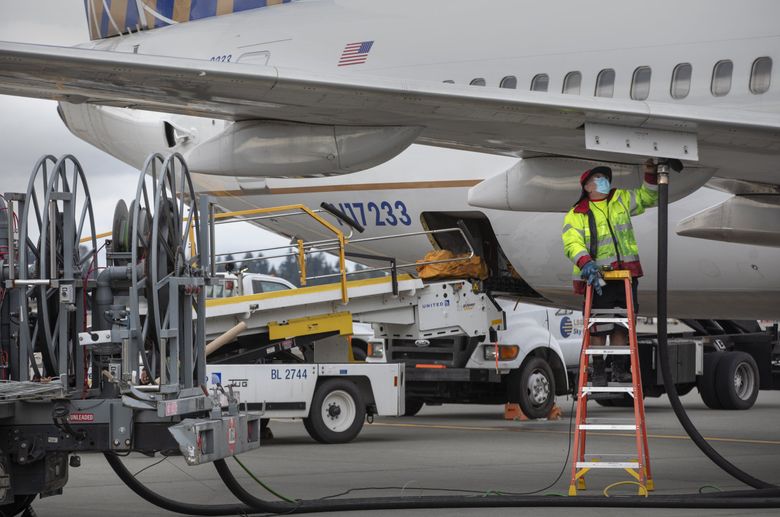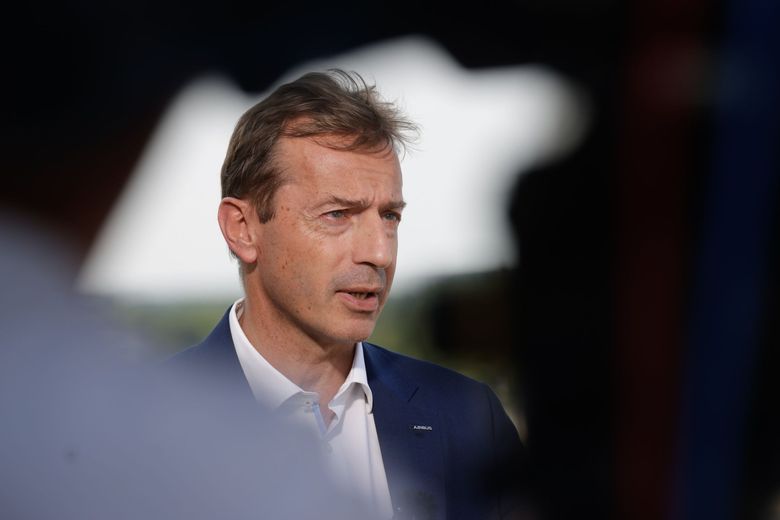
FARNBOROUGH, England — On the opening days of the Farnborough Air Show, Britain endured record high temperatures and as the mercury climbed past 100 degrees Fahrenheit, people retreated where possible from the scorched runways to the air-conditioned company chalets.
This was nature providing a timely reminder of the greatest threat to the airplane industry: concern over climate change driving an urgent need to decarbonize flight.
Boeing Vice President Brian Yutko, chief engineer for sustainability and future mobility, says the move toward more environmentally sustainable flight “is going to be the multidecade foundational challenge for the industry.”
“This is a challenge for a generation,” he said.
In interviews, top Airbus executives passionately tried to convey that the most immediate need is for Sustainable Aviation Fuel, or SAF — a term for jet fuel made either from recycled carbon biofuels such as wood waste or synthetically produced from carbon captured from the air.
Today, various startups produce only enough SAF to satisfy just 0.1% of the fuel needs for the world’s fleet of airplanes. Yet the industry is relying on increasing that to at least 10% by 2030 and to 70% by 2050 if it is to get near its target of net zero emissions by midcentury.
Though Airbus is working on advanced technologies such as hydrogen-powered flight that may one day be part of the solution, right now the urgent action required is to begin large-scale industrial production of SAF.
Of course, Airbus and Boeing make airplanes, not fuels. Their future depends upon SAF, but they won’t actually produce the stuff. What do they do?
Scherer, who bagged few new jet orders at the show, said that environmental sustainability was a bigger focus for Airbus this week than sales.
“For us the Air Show is much more urgent an opportunity, after the pandemic, to tell the world — the institutions, the politicians, the lawmakers, etc. — about what our industry does to be a responsible citizen of the world and map our road map toward decarbonized flying,” he said.
“What we need for the sake of this great industry is that the world sees us taking the bull by the horns and not just confronting the issue, but leading this transformation,” Scherer added. “That’s a much, much more important message to bring out in the trade show than how many A320s or how many MAXs are being sold.”
Catalyzing change
CEO Faury detailed some of the intense efforts he’s been making, meeting repeatedly with airlines, governments and energy companies to push the SAF agenda forward.
Airbus just committed to a $200 million joint venture with Australian airline Qantas to produce SAF.
And Faury met with executives of French energy giant Total and helped convince them of the potential airline market for SAF. Total is now partnering with a Japanese oil company with a goal of producing 300,000 tonnes of SAF per year.
“We’re not yet at the point where SAF is being delivered. That’s frustrating,” Faury conceded. “But these are big projects. They spend money now.”
“We are at the point where large investors, large companies, are putting their money where my mouth is: which is SAF needs to come to the industry now,” he added.
“This is a big change,” Faury insisted. “Three years ago, nobody was interested in investing in SAF … If people are investing now, five years down the road there will be a lot of SAF hitting the tanks of airplanes.”
Boeing is making a parallel effort.
“We’re not trying to be a fuel producer,” said Chris Raymond, senior vice president and chief sustainability officer at Boeing. “Our role as one of the leading manufacturers in aviation has to be to try to catalyze this; in some cases, bring the right parties together and get the right people around the table.”
If the aviation industry succeeds in the push for vastly scaled-up SAF production, another tough realization must soon follow, which is that SAF will be much more expensive than today’s oil-based jet fuel.
Boeing’s Yutko was one of the panel of advisory experts who reviewed a June report by the International Council on Clean Transportation, an independent source of technical and policy expertise on clean transportation.
It analyzed three scenarios for the future of aviation, from moderate to aggressive action. The middle scenario assumes that aggressive government mandates, incentives and fuel taxes will drive widespread SAF uptake to 70% of demand.
With these assumptions, it concluded that fuel prices would rise 17% by 2030 and that aviation’s carbon emissions in 2050 would be half what they were in 2019.
Only even more aggressive action would reach the net zero emissions goal.
Starting from 0.1% of world aviation’s need for SAF and aiming to produce 70% or more will clearly be an enormous challenge.
A huge industrial infrastructure to produce it must be created almost from scratch.
“But if you don’t start it’s not going to happen,” said Scherer.

